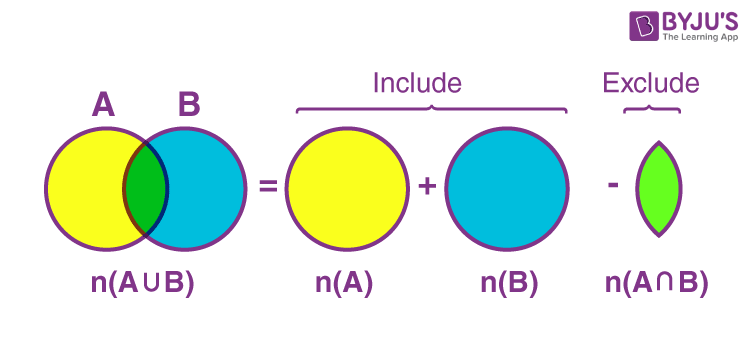Inclusion-Exclusion Principle
This is super helpful to solve lots of problems. You can use the same idea in Probability. For two sets, we have For three sets, we have
For four sets, you follow the same pattern with , and add at the end.
For Probability from STAT206
title: Theorem
Given two events, $A$ and $B$,
$$P(A \cup B)= P(A) + P(B) - P(A \cap B)$$
Given three events, $A$, $B$ and $C$,
$$P(A \cup B \cup C)= P(A) + P(B) + P(C) - P(A \cap B) - P(A \cap C) - P(B \cap C) + P(A \cap B \cap C)$$Intuition
The intuition is that we subtract to avoid double counting.
 When we add these two sets together, we are double counting , so we subtract it so count exactly once.
When we add these two sets together, we are double counting , so we subtract it so count exactly once.
For three sets, subtracting the intersections would also remove all of the , so we need to add it in again. See the diagram below:

Problems where you use Inclusion-Exclusion
Ex1: Let Find the number of sets where is a set of elements in that are relatively prime to .
A = divisible by 2 B = divisible by 5 C = divisible by 7
to be solved
Ex2: A random 13 card hand is dealt from a deck of 52 cards. Find the probability that at least one suit is not in the dealt hand.
A = no clubs in hand B = no hearts in hand C = no diamonds in hand D = no spades in hand
CP Problems
There are many problems that can leverage this, if you can solve for them independently. For example, https://codeforces.com/problemset/problem/2039/C2
Your answer is the number of numbers divisible by + the # of numbers divisible by - the # of numbers divisible by both and